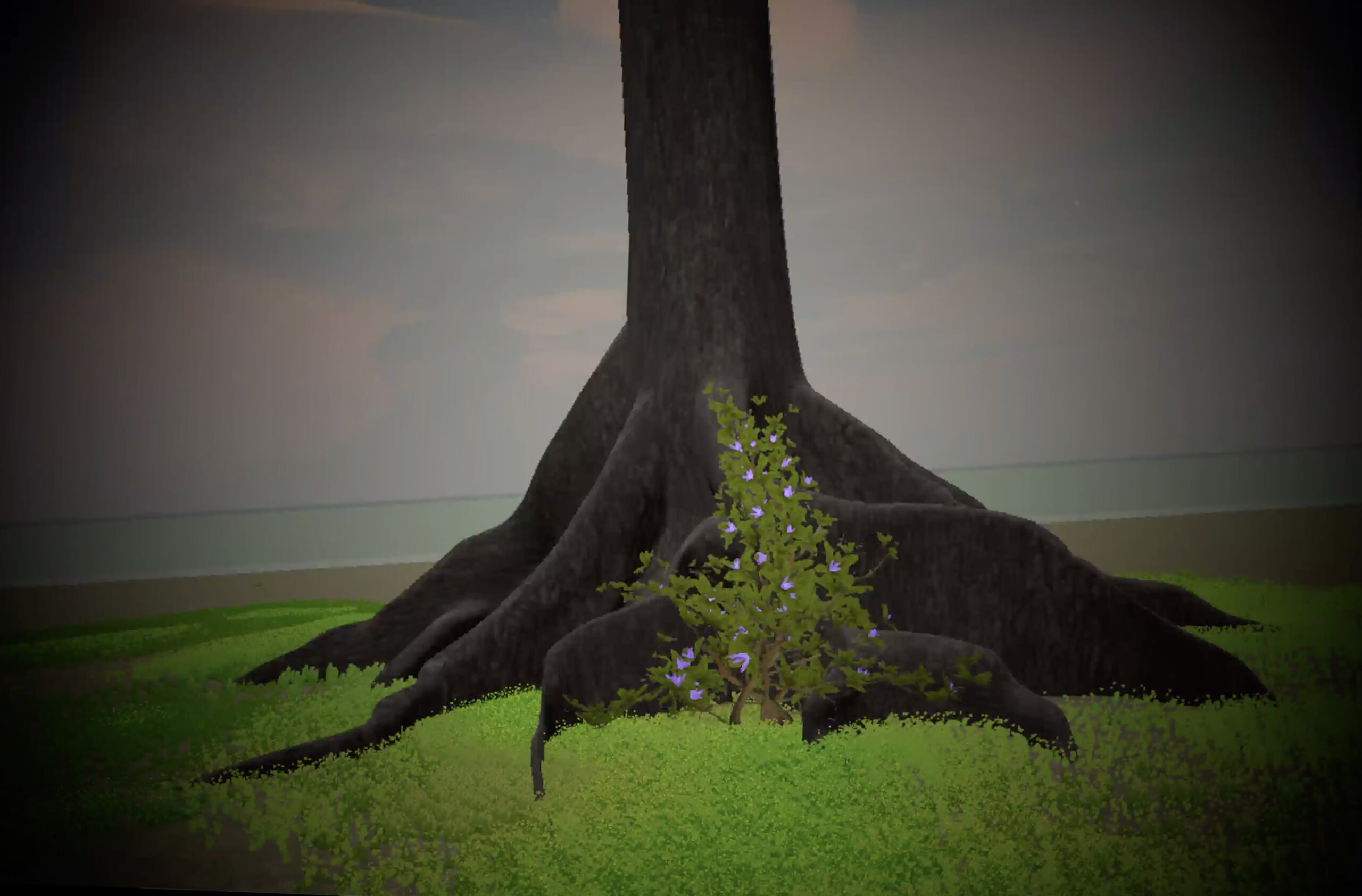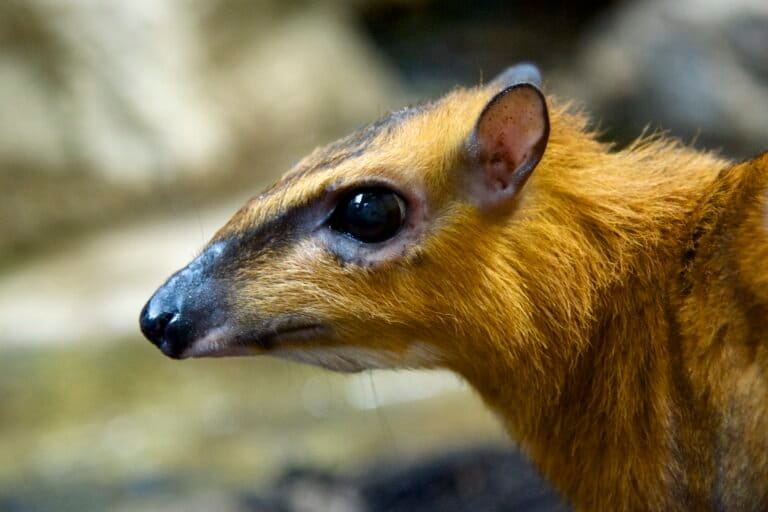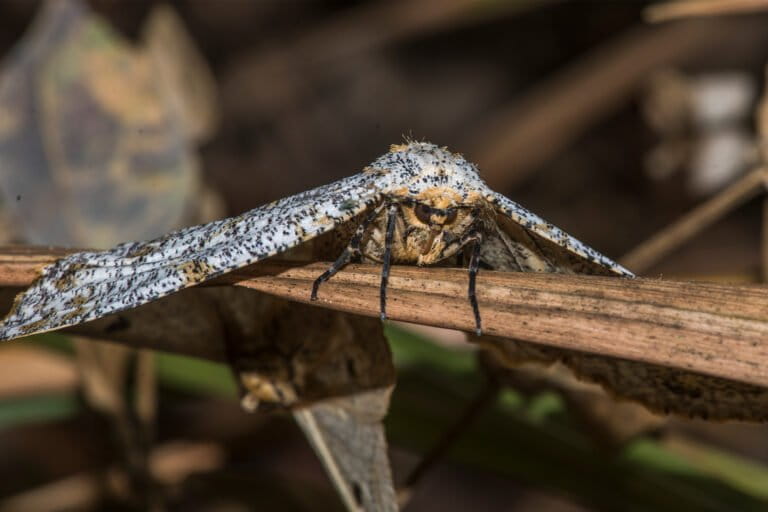- Researchers teamed up with a student-based tech lab to develop an interactive virtual reality tool that gives users entry into the vision of another species–a tiny nocturnal primate with huge eyes that must catch prey in the dark.
- Tarsier Goggles can simulate human and tarsier vision under varying ambient lighting conditions.
- By simulating the tarsier’s superior night vision relative to humans, the interactive educational tool integrates anatomy with natural selection, an important connection, given how visual properties affect the ways animals forage.
- Participating students expressed a preference for the interactive learning features – “Instead of hearing what life is like, you [can] actually experience it.”
Other animals see the world quite differently from us humans.
Researchers at Dartmouth College teamed up with a student-based technology lab to develop an interactive virtual entry into the vision of another species. And not just any other species – a tiny nocturnal primate with the largest eyes relative to body size of any living vertebrate.
They created a virtual reality (VR) learning tool, called Tarsier Goggles, which enables the viewer to experience the visual system of a primate adapted to rainforest life in the dark.
The perspective of a night hunter
Tarsiers are the only living primates that feed entirely on live prey, but they are active at night so must be able to detect and catch insects and other animals in the dark. The huge eyeballs are highly sensitive to light but cannot move in their sockets. Tarsiers make up for that by being able to turn their heads 360 degrees.
Tarsier’s extremely large eyes are “most likely related to the absence of a tapetum lucidum, the mirror-like structure that results in ‘eye shine’,” write the researchers in their recently published paper. Most nocturnal vertebrates, such as cats or owls, have this light-reflecting layer, which facilitates seeing at night.

Tarsiers live in the rainforests of Indonesia, Malaysia, and the Philippines. Leaping among branches at night requires them to perceive bot branches and prey in pitch darkness, but doesn’t prioritize color vision. And, in fact, Bornean tarsiers have protanopia, a form of red-green color blindness.
Virtual reality learning environments
The researchers made their new VR software open-access to give anyone with access to VR goggles a chance to experience a tarsier’s vision first-hand and to better understand why having such oversized eyes makes sense for these animals.
The self-guided experience allows users to toggle between human and tarsier vision to compare the relative advantages of each in three different virtual learning environments. The “Matrix,” “Labyrinth,” and “Bornean Rainforest” environments simulate, respectively, how a tarsier’s vision differs from a human’s in terms of acuity (sharpness), color vision, and brightness.
Users can move through these virtual environments like a tarsier does, leaping and clinging to trees in what the authors describe in their paper as “a dark, maze-like space that is practically opaque under human visual conditions but navigable as a tarsier.”
 |
 |
 |
 |
| Internal views of Tarsier Goggles show perspectives under twilight conditions, revealing differences in visual sensitivity (brightness), acuity, and color discrimination between human vision (on left) and tarsier vision (on right). Humans have better color vision, as shown in the top row, but tarsiers would fare far better jumping through the Matrix (bottom row). Image adapted from Figure 3 of Gochman et al (2019) “Tarsier Goggles: a virtual reality tool for experiencing the optics of a dark‑adapted primate visual system.” | |
“We based the simulation of tarsier vision on evidence from previous scientific research that investigated specific visual traits such as protanopia,” lead author Samuel Gochman told Mongabay. “In that case, we could represent that effect in the software because it is known that the tarsier species of focus has a form of red-green color blindness.”
Gochman, a 2018 Dartmouth graduate, and senior author and anthropology professor Nathanial Dominy, partnered with the Dartmouth Applied Learning and Innovation (DALI) Lab, where students design and build technology, including mobile apps, websites, and virtual and augmented reality.
They wanted to create a tool that could change how people perceive our world by experiencing how another species sees it. The resulting software product produces a virtual learning environment that simulates the benefits of various ocular adaptations, such as having eyes with high densities of rod photoreceptors cells, which are responsible for vision at low light levels. Tarsiers have more than 300,000 of these per square millimeter of eye, whereas humans have roughly 176,000 per square millimeter.
The team decided on a virtual reality experience because it would be immersive and could be used as a teaching tool in a classroom setting that provided students with a fun, interactive way to explore the complex concepts of physiology and natural selection.
For example, the tarsier’s huge eyes, high density of rod photoreceptor cells, and high visual acuity (sharpness) combine to provide superior nighttime vision, which these tiny primates need to successfully catch insects and other live prey in the dark.

“Most ninth- and 10th-grade students in the U.S. learn about optics and natural selection, but the two topics are usually treated in isolation,” said Dominy in a statement. “The tarsier is an effective means of unifying both concepts. You have to understand optical principles to understand why natural selection would favor such enormous eyes in such a tiny predator.”
Testing, testing
They tested the system first through several ad hoc demonstrations to students, faculty, and families, including biological anthropologists familiar with tarsier vision, during which 35 users of various backgrounds and ages wore the goggles. These groups provided feedback that the team incorporated into subsequent iterations of the software.
A Dartmouth professor of engineering who participated commented, “We all think we are seeing what everyone else sees, but in fact we are all seeing something different. I feel connected to animals in a way I haven’t been before.”
“Engaging with users was crucial,” Gochman said, “as it helped us not only test functionality but also observe how the system was experienced in real time. Through iterations of the design, we streamlined the progression of interactions within the VR and added additional support for individual users.”
In two formal assessments with high school students, the researchers provided a brief orientation on tarsier foraging behavior and on their physical appearance, including the relative size of their eyes, which is comparable to the size of their brains. It did not provide the users with materials on natural selection or on the visual anatomy or tarsiers or people. It immediately immersed each student into the virtual learning environment for five minutes to experience tarsier vision for themselves under the low-light conditions in which these animals live.

During the assessments, other students could watch on a monitor what their goggle-wearing classmates were viewing, which promoted comments and discussion that, the authors said, broadened the learning experience beyond the individual user.
The authors wrote that the pilot users experienced the intended effects, integrating optical and biological concepts to enrich their understanding of eye evolution and tarsiers.
“As intended, the dark and obscured virtual environments confused most students who used the human lens,” Gochman said. “But when the students transitioned to the tarsier’s view, a look of marvel washed over them as they explored their environments from a new perspective.”
Participating students who completed a brief survey to assist the formal assessment of the VR tool showed a preference for the interactive learning features. “As one student put it,” the authors wrote, “’Instead of hearing what life is like, you [can] actually experience it.’”
“A completely different worldview”
Visual properties affect how all animals forage, so the researchers’ aim for Tarsier Goggles is to enhance classroom education on both optics and evolution. They’ve made both a description and the software code available for free online.
“One of our successes with Tarsier Goggles is its role in shifting students’ perspectives,” Gochman said. “Rather than receiving a lecture or reading a chapter in a textbook, students can see for themselves how another animal has adapted to such different environmental conditions, resulting in a completely different worldview.”

The researchers hope to apply this process to other visual systems. “During our design process,” Gochman said, “we modified the system to incorporate vision of strigiform owls, which demonstrate a case of convergent evolution with tarsiers. This was done for a group learning about birds, but we decided to focus on tarsiers alone in the final design to emphasize a comparison between primate systems.”
In their paper, the authors suggested other applications of the technology, such as simulating human visual impairments, which could promote greater empathy.
Citation
Gochman, S. R., Lord, M. M., Goyal, N., Chow, K., Cooper, B. K., Gray, L. K., … & Seong, H. J. (2019). Tarsier Goggles: a virtual reality tool for experiencing the optics of a dark-adapted primate visual system. Evolution: Education and Outreach, 12(1), 9.
FEEDBACK: Use this form to send a message to the editor of this post. If you want to post a public comment, you can do that at the bottom of the page.














